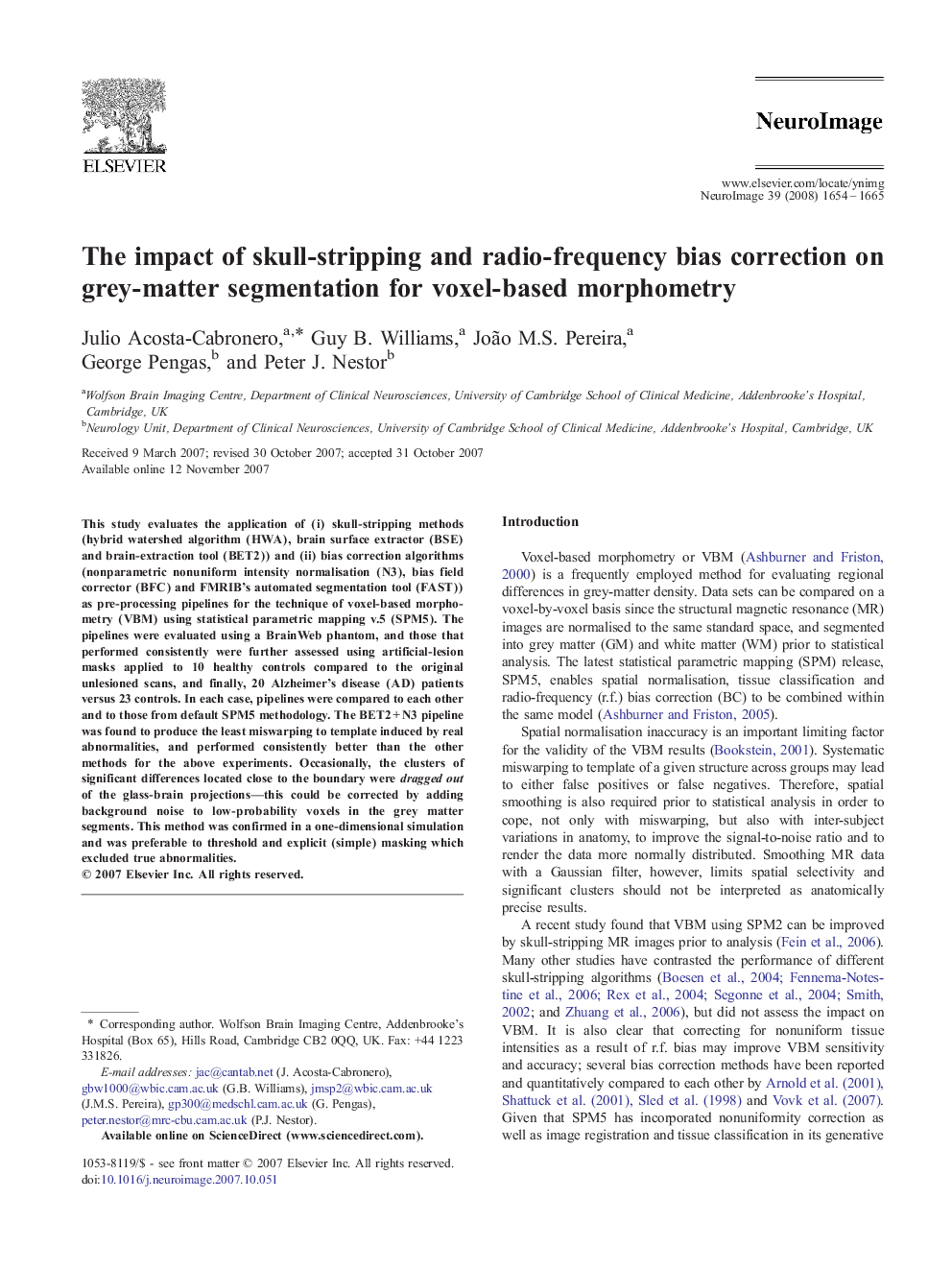| Article ID | Journal | Published Year | Pages | File Type |
|---|---|---|---|---|
| 3073379 | NeuroImage | 2008 | 12 Pages |
This study evaluates the application of (i) skull-stripping methods (hybrid watershed algorithm (HWA), brain surface extractor (BSE) and brain-extraction tool (BET2)) and (ii) bias correction algorithms (nonparametric nonuniform intensity normalisation (N3), bias field corrector (BFC) and FMRIB's automated segmentation tool (FAST)) as pre-processing pipelines for the technique of voxel-based morphometry (VBM) using statistical parametric mapping v.5 (SPM5). The pipelines were evaluated using a BrainWeb phantom, and those that performed consistently were further assessed using artificial-lesion masks applied to 10 healthy controls compared to the original unlesioned scans, and finally, 20 Alzheimer's disease (AD) patients versus 23 controls. In each case, pipelines were compared to each other and to those from default SPM5 methodology. The BET2 + N3 pipeline was found to produce the least miswarping to template induced by real abnormalities, and performed consistently better than the other methods for the above experiments. Occasionally, the clusters of significant differences located close to the boundary were dragged out of the glass-brain projections—this could be corrected by adding background noise to low-probability voxels in the grey matter segments. This method was confirmed in a one-dimensional simulation and was preferable to threshold and explicit (simple) masking which excluded true abnormalities.
